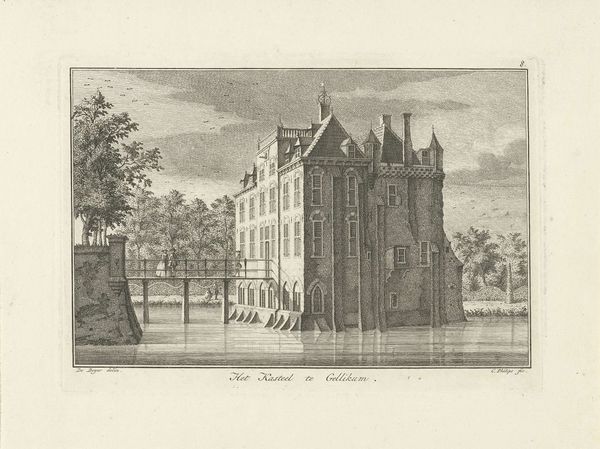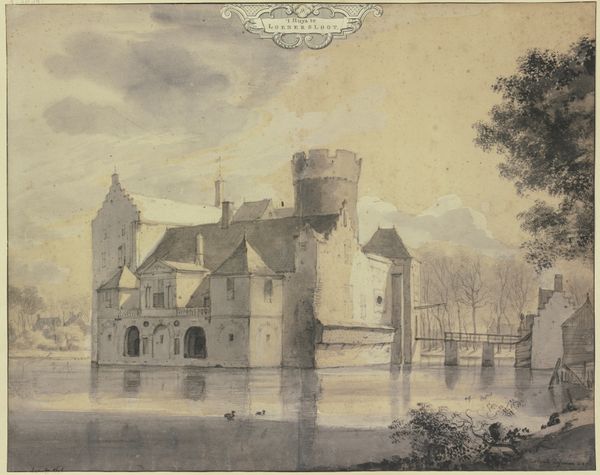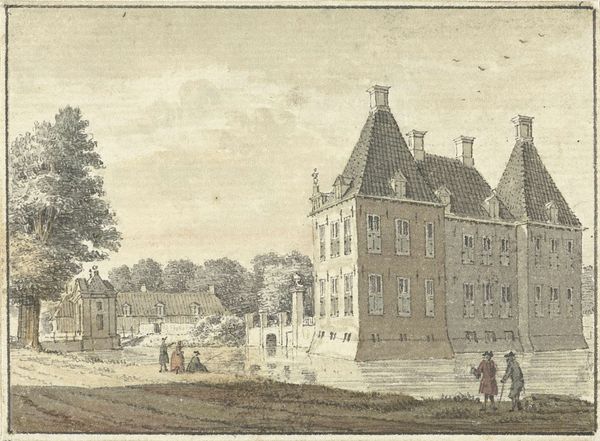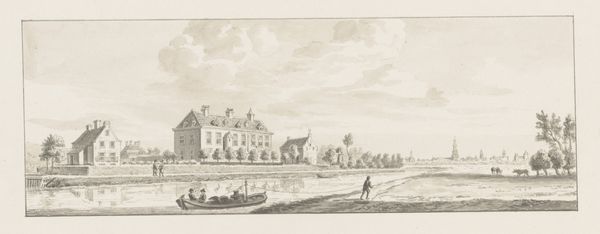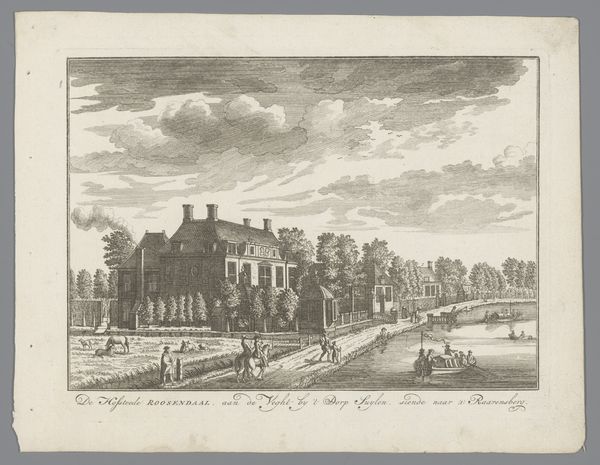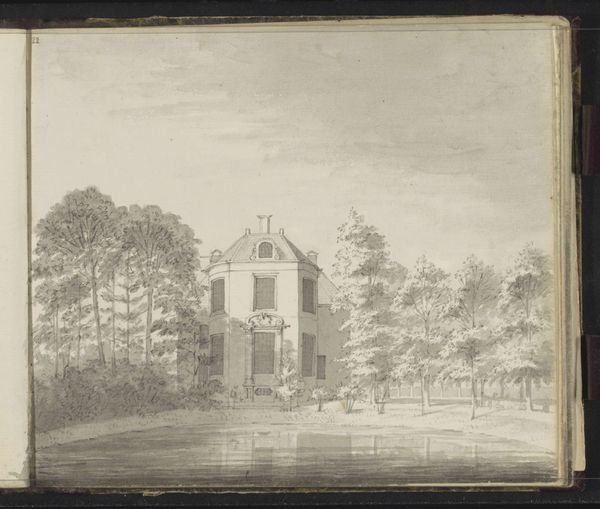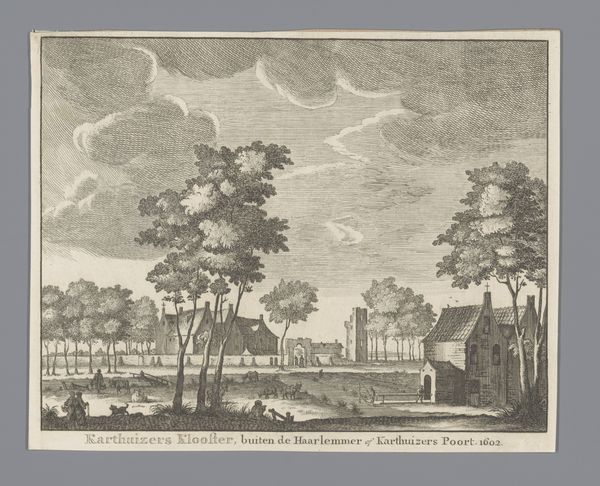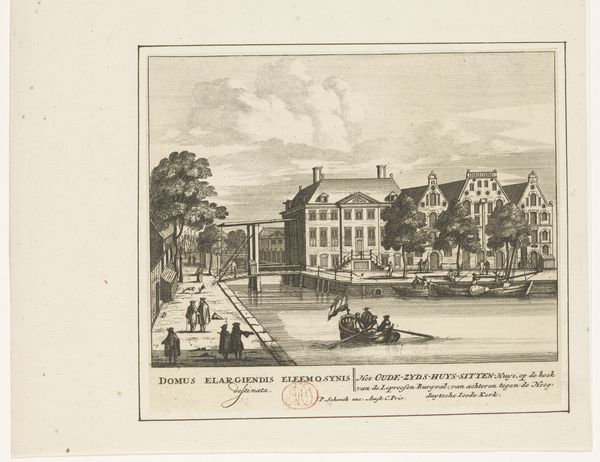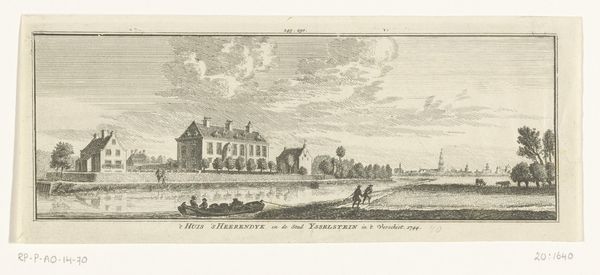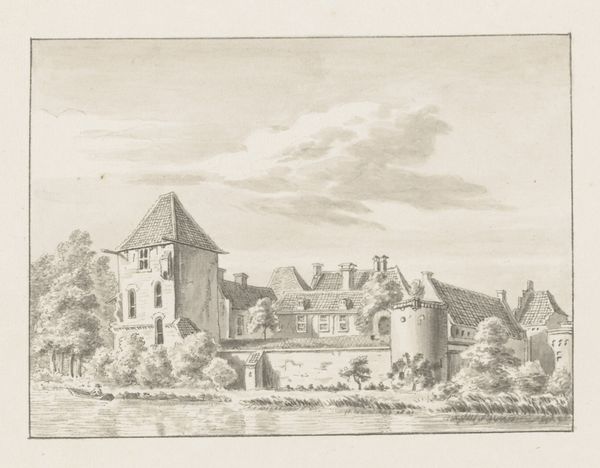
drawing, paper, engraving, architecture
#
drawing
#
baroque
#
old engraving style
#
landscape
#
paper
#
engraving
#
architecture
Dimensions: height 141 mm, width 216 mm
Copyright: Rijks Museum: Open Domain
Curator: Standing before us is "Gezicht op Kasteel Zuilenstein," or "View of Zuilenstein Castle," a drawing crafted between 1700 and 1760, attributed to Cornelis Pronk. Editor: Well, doesn't it look terribly civilized? Like a staged theatrical set! The misty grayscale creates this sort of delicate, almost dreamlike feel, doesn't it? So reserved, yet somehow inviting. Curator: Indeed. The architecture exemplified in Zuilenstein Castle represented the zenith of refined country living among the Dutch elite. These estate portraits showcased not only the buildings but also the cultivated nature and social decorum. Editor: It's funny, because you mention 'elite' and my immediate reaction is one of...restraint. I mean, the colors are muted, even the gestures of the people seem almost prescribed. But look closer. This isn’t reality—it's aspiration turned into idyllic art! Curator: Absolutely. The image aimed to communicate a vision of harmonious living. What looks effortlessly picturesque was often the product of strict societal norms and enormous expense. Estate views also helped the landowners legitimize social status by showing themselves rooted in this historic environment. Editor: And you have those figures walking into the composition, too— almost inviting you to step into it. I can imagine myself strolling into the image and sharing gossip of the day under the great tree... it really plays into a sense of idyllic beauty. Do you think there's some gentle ribbing going on, maybe about those carefully cultivated 'natural' vistas? Curator: A fascinating consideration. Pronk, a master of detailed topographical rendering, catered to a patron class very invested in upholding such presentations. It served an essential function: social identity. To poke fun might have not gone over well. Editor: You're right; there would have been no self-deprecation on that level in art meant for display. I just find it charming now— like these historical social niceties! Makes me want to take another, perhaps a little ironic, long look. Curator: Ultimately, it gives us a peek into the worldview of the time—revealing what the upper classes valued and how they wanted to be perceived, even today.
Comments
No comments
Be the first to comment and join the conversation on the ultimate creative platform.
